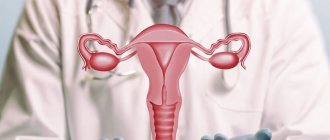The article was checked by specialists:
Khozhenko O.V. , chief physician of the SOVA clinic Taraskin T.A. , surgeon at the SOVA clinic
According to research, more than a billion people in the world are overweight and more than 300 million of them are faced with obesity - a chronic multifactorial disease in which excessive fat deposits are formed.
It has already been proven that obesity invariably leads to deterioration of health and often begins to threaten life. And doctors note that many patients exaggerate their determination and ability to solve the problem, believing that they can quickly lose weight, and therefore delay starting treatment.
Therefore, the body gradually gets used to the wrong diet and even becomes dependent on the volume of food. The stomach stretches and requires more and more food before feeling full. And a significant imbalance between the amount of energy received and expended ultimately leads to active fat deposition.
A sedentary lifestyle, combined with improper metabolism and overeating, leads to the accumulation of extra pounds. And when the hormonal balance is disrupted, the process of fat accumulation accelerates and a vicious circle results.
Diagnosis of the disease
There is a special indicator for diagnosing obesity - BMI, or body mass index.
By calculating it, you can understand whether a person is overweight. You can carry out the diagnosis yourself: you need to divide your body weight in kilograms by your height in meters squared. Important: this method should not be used for calculations and diagnosis of the disease in children and pregnant women. Also, the method is not suitable for those who play sports professionally and for people with overly developed muscles.
A BMI in the range of 18.5-24.5 kg/m2 means that a person’s body weight is normal.
A BMI equal to 25.0-29.9 35 kg/m2 indicates excess weight.
If the BMI calculation turns out to be more than 30 kg/m2, then this indicates obesity:
- with numbers in the range of 30-34.9, a diagnosis of “I degree obesity” is made,
- if the indicator is 35-39.9 units, then this indicates obesity of the second degree,
- with a BMI of more than 40 kg/m2, the patient is diagnosed with “morbid obesity,” or in other words, stage III obesity (with such figures, body weight is increased by 45-50% of the normal value, and it is very difficult for a person to lose weight on his own).
Morbid obesity is a consequence of the first two degrees; with it, serious changes occur in the body.
Complications
Obesity is recognized as one of the most common factors that significantly increases the risk of:
- atherosclerosis,
- cardiovascular diseases (varicose veins, hypertension, coronary heart disease, acute cerebrovascular accident, myocardial infarction),
- type 2 diabetes mellitus,
- cholelithiasis,
- osteoarthritis,
- sleep apnea syndrome,
- dyslipidemia,
- non-alcoholic fatty hepatosis,
- oncological processes (breast cancer, uterine cancer, ovarian cancer, prostate cancer),
- disturbances in the functioning of the reproductive system (including infertility).
Additionally, you can measure your waist circumference. If a man’s circumference is more than 94 centimeters, and a woman’s is more than 80 centimeters, then the risks of developing “companion” diseases increase several times.
Among those diagnosed with extreme obesity, the risk of death is increased 10-fold.
Often, obese patients have increased function of the sweat and sebaceous glands, the skin is moist, greasy, with pustules and eczema. Inguinal and umbilical hernias are quite typical.
Degrees of obesity. Types of obesity
In 1997, WHO proposed a classification of obesity in which there are 4 degrees of this disease. The degree is determined based on the Body Mass Index (BMI) formula: the ratio of the height of a person from 18 to 65 years old to his height in square meters. The main difference between the degrees of obesity is the amount of extra pounds and the risk of certain concomitant diseases.
Obesity levels
— BMI up to 18.5 – underweight.
— BMI 18.5-25 – normal weight. Lowest risk of morbidity and mortality.
— BMI 25-30 – pre-obese. Excess body weight about 29%.
— BMI 30-35 – 1 degree of obesity. Excess body weight 30-40%.
— BMI 35-40 – 2nd degree of obesity. Excess body weight 50-90%.
— BMI 40 and above – 3 and 4 degrees of obesity. Exceeding the normal weight by more than 2 times.
A BMI of 30 or higher requires immediate consultation with a doctor to develop a treatment plan, since the person has a direct threat to his health.
People with 1-2 degrees of obesity , that is, with a BMI from 30 to 40, are usually not very concerned about their health. They have no serious complaints. In some cases, we are talking about weakness, irritability, sweating, constipation, shortness of breath, nausea, pain in the joints and spine.
Levels 3 and 4 obesity are characterized by more serious health problems. The functioning of the heart, respiratory and digestive systems is disrupted. Hypertension, tachycardia, respiratory failure. Fatty infiltration of the liver parenchyma, chronic pancreatitis, chronic cholecystitis. Pain in the spine and joints is becoming more and more disturbing, and arthrosis of the knee and ankle joints is developing. Excessive sweating leads to skin problems (furunculosis, pyoderma, eczema, stretch marks, pigmentation). Menstrual irregularities become more frequent and problems with potency appear. Metabolic syndrome in all its manifestations is actively developing. Such obesity is almost always accompanied by problems with blood sugar, prediabetes, and type 2 diabetes.
Types of obesity according to the location of fat deposits on the body
– abdominal type of obesity (android, upper) – excess fat tissue is located in the upper part of the body (especially on the stomach). Apple shaped figure. Men are most susceptible to this type of obesity. This type of obesity is very dangerous for health, as it carries risks of stroke, heart attack, diabetes, and hypertension. The android type of obesity is characterized by a large number of associated complications. Fatty tissue in the abdominal area is located not only in the subcutaneous space, but also envelops the internal organs. Visceral obesity develops, disrupting the normal function of the liver, intestines, stomach and other organs.
– femoral-gluteal type of obesity (lower) – excess fatty tissue is located mainly on the hips and buttocks. Pear-shaped figure. Women are most susceptible to this type of obesity. Characteristic risks of lower obesity are venous insufficiency, varicose veins, pain and disorders in the spine and joints.
- mixed type of obesity (intermediate) - excess fat tissue is distributed evenly throughout the body, combining all the risks and complications of the two previous types. The most common type of obesity in the world.
Obesity develops according to 2 possible scenarios
1 scenario. The number of fat cells is constant; fat accumulates in each cell, increasing its volume. The normal volume of a fat cell is 0.3 microlites, the maximum is 1 microlit. That is, regardless of the amount of accumulated fat, body fat will exceed the norm by a maximum of 3-4 times. This scenario has a scientific name: hypertrophic obesity and usually develops with age.
Scenario 2. Fat cells actively multiply. Their number in the body is constantly increasing. Each new cell works to increase appetite. The weight grows to exorbitant levels and, in principle, has no limits to its increase. The scientific name for this scenario is hyperplastic obesity. It is more often associated with poor heredity, poor eating behavior, and low activity. This scenario starts at any, even very early age. The trigger can be puberty, pregnancy, menopause, taking medications, forced inactivity (for example, long-term treatment for another reason).
Obesity can be at a progressive stage (fat deposits increase, weight increases), at a plateau stage (weight stays the same) or at a residual stage (residual weight after losing weight).
Depending on the cause and mechanism of development of the disease, obesity can be primary, secondary or endocrine.
Primary obesity is caused by nutritional factors (excess calories, low energy expenditure of the body, fat accumulation). Improper eating behavior only contributes to the development of such obesity: the predominance of animal fats and carbohydrates, large and rare meals, calorie intake before bed or at night).
Causes of obesity
As we have already said, this is a multifactorial disease, its causes can be:
- excess calories in the diet (fat and carbohydrates predominate in food),
- chaotic diet,
- lack of physical activity, especially with increased caloric intake,
- raising children by rewarding them with sweets as a reward.
Here you can add a monotonous diet and the fact that patients do not take into account the calorie content of alcoholic beverages.
Very often, the “foundation” for the development of obesity is called overeating, which may be based on:
- psychological reasons (the habit of “eating” stress, dissatisfaction with others, non-food desires, etc.);
- social factors (for example, in the family it is customary to eat “to the fullest”, the habit of eating large portions, and it is extremely awkward to refuse excess food);
- physiological nuances (increase in the volume of the stomach, overstretching of its walls due to the habit of absorbing too large portions of food).
Causes of obesity
Many factors play an important role in the formation of obesity.
Observations of identical and fraternal twins reared apart have shown that variations in BMI are approximately 70% determined by genetic factors and only 30% by environmental influences. The most important factors in the increase in the incidence of obesity are overeating and consumption of foods high in fat or disordered eating - shifting the bulk of the daily calorie intake to the evening hours. This style and structure of nutrition is typical for many developed countries. If a person eats in rare but plentiful portions, the body quickly adapts to converting carbohydrates into fats. It's even worse if a person doesn't eat all day and then eats too much before going to bed. Alcohol prevents the oxidation of fats and promotes their accumulation, so body weight directly correlates with the level of alcohol consumption. In many ways, the development of obesity is facilitated by an increase in appetite with age and a decrease in the level of growth hormone secretion. When you overeat, your body receives more energy than it can use.
Obesity begins to develop at the age of 20-30 years, but more often after 40 years. Women are more likely to be obese than men. This is due to a number of factors. In women, metabolic processes proceed more slowly, even if adjustments are made for the constitution and degree of activity. Another circumstance that predisposes women to weight gain as they age is the shutdown of the luteal phase of the menstrual cycle during postmenopause, during which metabolism is activated. In old age, these differences between men and women even increase. The tendency to obesity in women is inversely related to physical activity and directly related to the number of births. Each person is subject to the diverse influences of heredity and the environment; laboratory diagnostics makes it possible to establish the leading causes of obesity in an individual patient.
Obesity treatment
Doctors identify 3 main goals that need to be achieved when treating patients with obesity:
- achieving ideal body weight;
- stopping the process of weight gain, which is especially important for young patients;
- reducing excess weight by at least 10% to reduce the risk of developing concomitant diseases and reduce the severity of their clinical manifestations.
The treatment program will depend on the degree of obesity and concomitant diseases. In the early stages, with a BMI of 25 to 35, it is quite possible to cope with weight gain with the help of diet, avoiding overeating and moderate physical activity. But with second and third degrees of obesity, problems will have to be solved using a more drastic method.
There are 2 standard directions in treatment:
- conservative treatment (non-drug and drug). That is, diet, exercise and medication use;
- surgery.
During treatment, first of all, it is necessary to adjust eating behavior and develop a schedule of sufficient physical activity. Although formally easy, such recommendations are extremely difficult to implement over a long period of time.
Doctors try to adhere to the preventive focus of therapy. To put it simply, it is preferable to lose a few kg and maintain the new weight for a long time, while reducing the risk of complications, than to lose several tens of kilograms in a short period of time, but within a month gain even more, which will significantly accelerate the fatal outcome.
With any treatment option, it is necessary to remember that the body must receive vitamins and nutrients (amino acids, minerals, etc.).
Conservative treatment of obesity
Conservative treatment may include diet therapy (reducing caloric intake), exercise and psychotherapy. However, there is no guarantee of long-term results: on average, only 10% of patients, having lost weight, will maintain it for longer than two years.
Surgical treatment of obesity
If conservative methods are ineffective, invasive treatment methods have to be used:
- installation of an intragastric balloon;
- bariatric surgeries (restrictive, bypass, combined).
Only a doctor can figure out what type of intervention is suitable, taking into account a person’s individuality, the presence of chronic and concomitant diseases, and the amount of extra pounds. Almost all operations make it possible to get rid of diabetes or improve its course, but a treatment regimen should be prescribed by an experienced doctor after a thorough history and examination.
Obesity in men and women: causes and treatment
Table of contents
- Causes of the disease
- Formula for calculating ideal weight. Obesity levels
- Symptoms
- Why is it dangerous?
- How to treat obesity?
- Advantages of treatment at MEDSI clinics
Obesity is a disease that occurs when there is an excess of fat deposits, which accumulate not only in the subcutaneous tissue, but also in various tissues and organs. The diagnosis is made when body weight increases by 20%
or more from the average. Obesity is a pathological condition that causes not only physical but also psychological discomfort. In addition, patients often complain of sexual dysfunction. Obesity can cause diseases of the joints and spine, increase the risk of developing pathologies of the heart and blood vessels, damage to the liver, kidneys and other organs.
In Russia, about 30% suffer from obesity
population. As a rule, the disease occurs in people aged 30 to 60 years, but cases of earlier active accumulation of fatty deposits are also recorded. Today obesity is successfully treated! For therapy, you should consult with a specialist, and not try to experiment with diets on your own or completely give up food. This may aggravate the condition, but will not allow you to get rid of excess weight.
Causes of the disease
Main causes of obesity
are called:
- Binge eating
- Sedentary lifestyle
- Hormone imbalance
As a rule, the active accumulation of fat deposits is facilitated by the excess of calories consumed over consumed. Excess energy enters the body and is not consumed. Excess fats and carbohydrates from food are converted into fat.
The problem can also be caused by thyroid disease, stress, long-term use of hormones and a number of other medications. Hereditary predisposition plays an important role in the development of obesity. Families of obese people often give birth to children who are prone to rapid weight gain.
When identifying the causes of obesity, it should be understood that it can be:
- Primary
. This pathology is provoked by nutritional disorders and slow metabolic processes. - Secondary
. This pathology occurs in the presence of an underlying disease and is its consequence.
The list of causes of obesity also includes age-related changes that occur in the body. Some people notice an increase in body weight even if they maintain their diet and maintain an active lifestyle. The fact is that the older we get, the slower fat is broken down in the body. The speed and volume of processing of food consumed is also reduced when taking certain medications to lower blood pressure, for example.
Formula for calculating ideal weight. Obesity levels
A simple formula is used to calculate your ideal weight.
To find out your BMI (body mass index), you need to determine your weight (in kilograms) and measure your height (in meters).
Then the number indicating the weight should be divided by the number obtained by squaring the digital expression of height.
Using this formula, experts distinguish 4 degrees of obesity:
- Overweight (BMI 25.0–29.9)
. In this case, excess body weight usually does not exceed 10 kg. At this weight, a person does not experience any significant discomfort. In some cases (usually during intense physical exertion), slight shortness of breath may occur and pass quickly. - Grade 1 (BMI 30.0–34.9)
. Excess body weight with such obesity is up to 15–20 kg. Patients complain of fatigue, swelling of the legs, sweating and shortness of breath even with light exertion. Visible external changes are also highlighted. Typically, most of the fat deposits accumulate in the abdominal area. - Grade 2 (BMI 35.0–39.9)
. Excess body weight can reach 20–30 kg. With a normal weight of 70 kg, the patient may weigh 100 kg. With such obesity, even small loads are reduced to a minimum, since the person cannot withstand them and complains of fatigue, severe sweating and shortness of breath. The pathological condition is dangerous because it can cause heart problems, pain in the lower extremities, and vascular diseases - Grade 3 (BMI ≥ 40)
. This pathology is rare. With this obesity, excess weight exceeds normal weight several times (up to 5). Patients even lose the ability to self-care, often barely move, and are forced to undergo complex treatment from cardiologists, endocrinologists and other specialists. Without quality treatment, the development of serious pathologies and even death of the patient is possible.
Symptoms
Obesity develops gradually and often unnoticed by a person. Often, slight excess weight is perceived calmly by the patient himself and can be attributed to “holiday treats” or “nerves.” Meanwhile, if you do not immediately take the necessary measures, for example, limit your carbohydrate intake, fat will continue to accumulate. The main danger of obesity is that some of the fat remains invisible, as it settles on the internal organs.
As the pathology develops, it also provokes pronounced symptoms.
.
These include:
- Visible changes in the figure (increase in the volume of the abdomen, chest, arms, hips, etc.)
- Uncontrollable appetite (especially in the evening and even at night)
- Constant shortness of breath
- Weakness
- Swelling
As obesity progresses, it leads to an increase in sugar and cholesterol levels, neurotic disorders, pain in the lower extremities, and disturbances in bowel movements and urination. Some patients complain of increased blood pressure and discomfort in the heart area.
Important! Fat deposits accumulate in different areas in men and women.
Representatives of the fair sex often suffer from excess fatty tissue in the waist, buttocks, and thighs. In obese men, the belly begins to actively grow.
Why is it dangerous?
Obesity is dangerous because it can cause:
- Diabetes mellitus
. Pathology develops when cells become tolerant to glucose. Over time, blood sugar levels increase (more than 6 mmol/l). If the indicators are critical, a diagnosis of diabetes is made. - Formation of cholesterol deposits on the walls of blood vessels
. This pathological condition, in the absence of necessary therapy, can cause heart attack, stroke and a number of other life-threatening conditions. - Menstrual irregularities
. Which, in turn, leads to problems with conception and dangerous changes in hormonal levels. - Arterial hypertension
. This pathology can lead to stroke, cause blockage of blood vessels and other dangerous conditions. - Diseases of the kidneys, liver, heart
. Such pathologies can lead to a general decrease in quality of life, severe pain and constant discomfort. Some of them (coronary heart disease, renal failure, etc.) in advanced cases cause the death of the patient
It is also impossible not to note that obesity significantly limits a person’s activity. Excessive weight becomes an obstacle to playing sports. At the same time, only activity together with proper nutrition can eliminate excess subcutaneous tissue. Often, obese people experience complexes related to their appearance and refuse to communicate and speak in public. This can lead to job loss and leading a secluded lifestyle. Such a stressful situation often gets stuck.
How to treat obesity?
Treatment of obesity in women and men
is always carried out comprehensively. The basis of effective therapy is professional diagnosis. It allows you to determine the causes of the pathological condition and subsequently eliminate them.
If obesity is caused by problems with the thyroid gland, for example, special medications are necessarily prescribed. They allow you to fight not the consequence of the pathology (excess weight), but the cause (the disease that stimulated fat deposition). If obesity is hereditary, treatment is carried out by a specialist such as an endocrinologist. When overeating, work with the patient is carried out by both an endocrinologist and nutritionist, and a psychotherapist. Doctors find out why a person experiences a constant desire to eat something. Drugs are prescribed to reduce appetite and, in parallel, psychotherapy sessions are conducted, during which the causes of overeating are clarified and new attitudes are formed.
Often (in about 80% of cases), treatment of obesity in women and men is carried out through therapeutic nutrition and moderate physical activity.
Excluded from the diet:
- Cakes, pastries, other confectionery and sweets
- Pure sugar
- Smoked meats, marinades and pickles
- Sparkling waters
- Fat meat
The daily menu must include:
- Fresh fruits and vegetables
- Fish
- Greenery
- Dairy products
The diet is developed only by a nutritionist! This specialist takes into account the individual characteristics of the patient, his state of health, concomitant or underlying diseases.
To achieve an energy deficit, physical therapy classes are required.
Moderate loads
provide:
- Complete waste of energy
- Improving heart muscle function
- Elimination of excess adipose tissue
- Oxygen saturation of all organs
- Increased endurance
- Increased vitality
Over time, loads may increase.
Important! Treatment is carried out only under the supervision of specialists. Only a team of an endocrinologist, nutritionist and other doctors can ensure the achievement of the desired result. There is no need to rush to lose excess weight as quickly as possible. A sudden change in body weight is as dangerous as obesity itself.
Advantages of treatment at MEDSI clinics
- Effective treatment of obesity. For therapy, both long-proven methods and modern ones developed by our specialists are used.
- Accompanying the patient at every stage of treatment. Working with a patient does not end even after he has lost weight. It is very important to maintain the results, not to gain kilograms again during the next stress or after stopping taking medications
- Using only proven methods and regimens for treating obesity. The methods used are based on the principle of evidence and comply with international medical standards
- Opportunities to work with a psychologist, psychotherapist
- Conducting therapy in outpatient and inpatient settings
- Treatment of obesity in women and men by doctors of related specializations
- Possibilities for eliminating excess weight surgically
Use the services of MEDSI clinics for the treatment of obesity, make an appointment with a doctor by calling +7 (495) 7-800-500.










